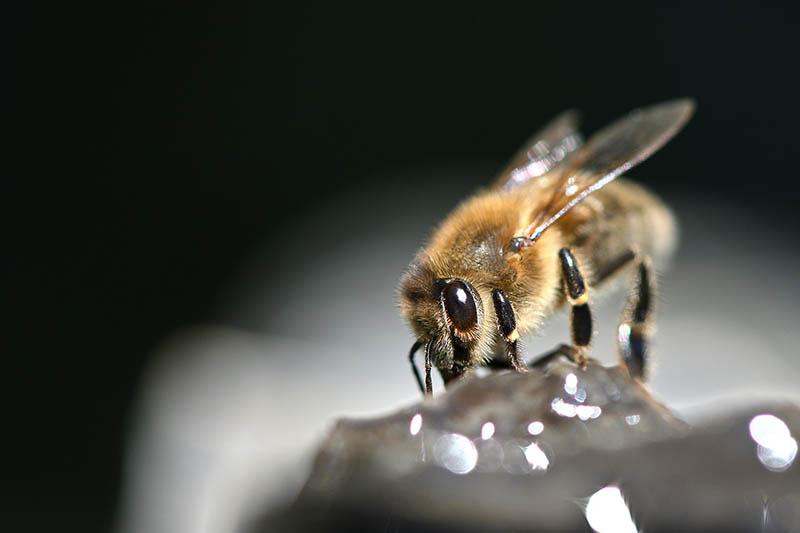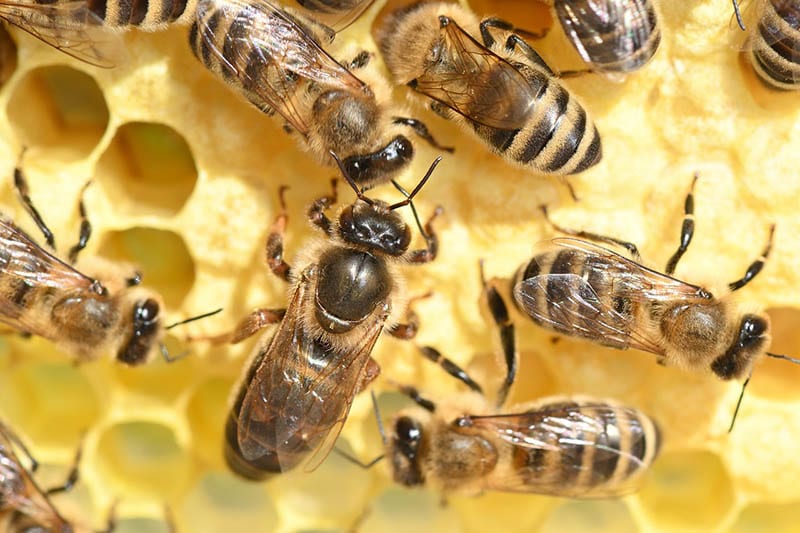What Is the State Insect of West Virginia? How it Was Decided
-
Pete Ortiz
- Last updated:

West Virginia is a beautiful state with a favorable climate, forming a good retirement hub. It is the third after Maine and Florida, with the highest percentage of folks aged 65+. Besides the slow-moving life, the smoking Blue Ridge Mountain ranges bring a sharp contrast full of turns and twists, which inspired John Denver to praise them in his song “Take Me Home.”
It is a rugged landscape that forms a natural habitat for timber rattlesnakes, shrews, and cottontail rabbits. Impenetrable forests covering the slopes are also home to native and imported insects, and in attempts to protect them, West Virginia named the European honey bee as the state insect.
Continue reading to learn more about how the busy bee landed on the hotly contested spot in West Virginia and 17 other states.
How Was the European Honey Bee Named West Virginia’s State Insect?
The European honey bee became the official state insect of West Virginia in 2002 following the approval of the Legislature’s Senate Concurrent Resolution No. 9. This is an excerpt from the resolution;
“WHEREAS, The sale of honey produced in West Virginia is an ever-growing segment of the state’s economy; and
WHEREAS, The honey bee represents an insect whose activity produces more benefit to the state’s economy than any other insect; therefore, be it
RESOLVED by the Legislature of West Virginia: That the Legislature hereby designates the honey bee the official state insect.”
The honey bee’s journey, however, wasn’t smooth. Lawmakers struggled to choose between the dazzling lady beetle and the industrious honey bee. The exact reason for this is still unknown, but the bill hints to us that the bee’s many economic benefits may have earned it the top spot.
Here are some of the benefits of bees in West Virginia.
Honey production
According to the Department of Agriculture 2020 report, West Virginia produced around 222,000 pounds of honey from over 6000 colonies. Mathematically, each colony produces over 37 pounds per season, and when multiplied by the number of colonies and the prevailing price per pound of honey of $4, you will get almost a million.
The European honey bee was shipped from Europe in the 1600s, so before that, West Virginians were not producing honey on a commercial scale. This began in the 1860s and led to the founding of the West Virginia Beekeepers Association in 1917.

Pollinating plants
Estimates show that about 30% of food consumed in North America is produced by bee pollination. In the Mountain State, they pollinate apples, peaches, and garden vegetables.

Making wax
Wax is the second most important product of bees. It is used to make environmentally friendly candles, polish surfaces, and protect natural leather.

Propolis for medicinal and beauty care products
Bees mix sap from needle-like trees with their own discharges and wax to create a sticky yellowish substance we usually see coated on the beehive. This highly beneficial compound is known as propolis. Propolis has over 300 compounds used to control the multiplication of cancer cells.
Furthermore, it is a natural sealant that prevents the skin from drying out and reduces the formation of wrinkles and blemishes in skin care products.
Species of European Honey Bees Identified as State Insects
European honey bee is an umbrella term used to describe three closely related sub-species based on where they originated from.
Italian honey bees (Apis mellifera ligustica)

Loved for their gentle and docile demeanor, Italian honey bees originated from Sicily and the southern parts of the Alps. Their abdomens are smaller and covered by black and brown-yellow bands.
From a commercial point of view, it is important to mention that their reluctance to swarm, resistance to diseases, and cleanliness are reasons why they are attractive to farmers. Hence, more than half of the honey from the state is produced by them.
Caucasian honey bees (Apis mellifera caucasia)

Caucasia bees were brought from Georgia and the central Caucasus regions. They are also docile and the only thing separating them from Italian bees is a brown spotted dark body.
Carniolan honey bees (Apis mellifera carnica)

Native to Slovenia, Austria, and Croatia, Carniolan bees lag behind in terms of honey production and size of colonies. While they build smaller colonies, they are able to gather nectar on colder, overcast days.
What is more, this is the only bee species that follows standard business principles. The colony reduces the worker’s population when plants stop flowering in winter and doubles up their numbers in the spring as plants blossom.
What Do Bees Symbolize in West Virginia?
Bees are viewed from political, religious, and economic angles. They represent a united community, a well-organized workforce, and a clean creature. Unity and hard work are some of the things that have kept the state intact for over 150 years.
In addition, bees are loyal to one leader, the queen. In return, she keeps laying eggs and ensures the colony has new members to take over. Believing in a committed leader gives the state enough time to plan for the future.
Is the Honey Bee the Only Important Animal in West Virginia?
Of course not. The state recognizes the monarch butterfly, timber rattlesnake, cardinal and Brook trout as the official state butterfly, reptile, bird, and fish, respectively. Legislation crowning the animals with their respective titles passed in 1995, 2008, 1949, and 1973 in the above order.
Conclusion
The European honey bee is the state insect of West Virginia following the approval of the Legislature’s Senate Concurrent Resolution No. 9 in 2002. It is an important insect that produces honey worth $1 million annually, wax, and propolis. The economic and symbolic meaning of bees underpins the reasons why we should protect them.
West Virginia also recognizes the rare monarch butterfly as the state butterfly. After traversing through the mountainous region, take one minute to think about the two invertebrates by planting milkweed and flowering trees.
Featured Image Credit: xiSerge, Pixabay
Contents




